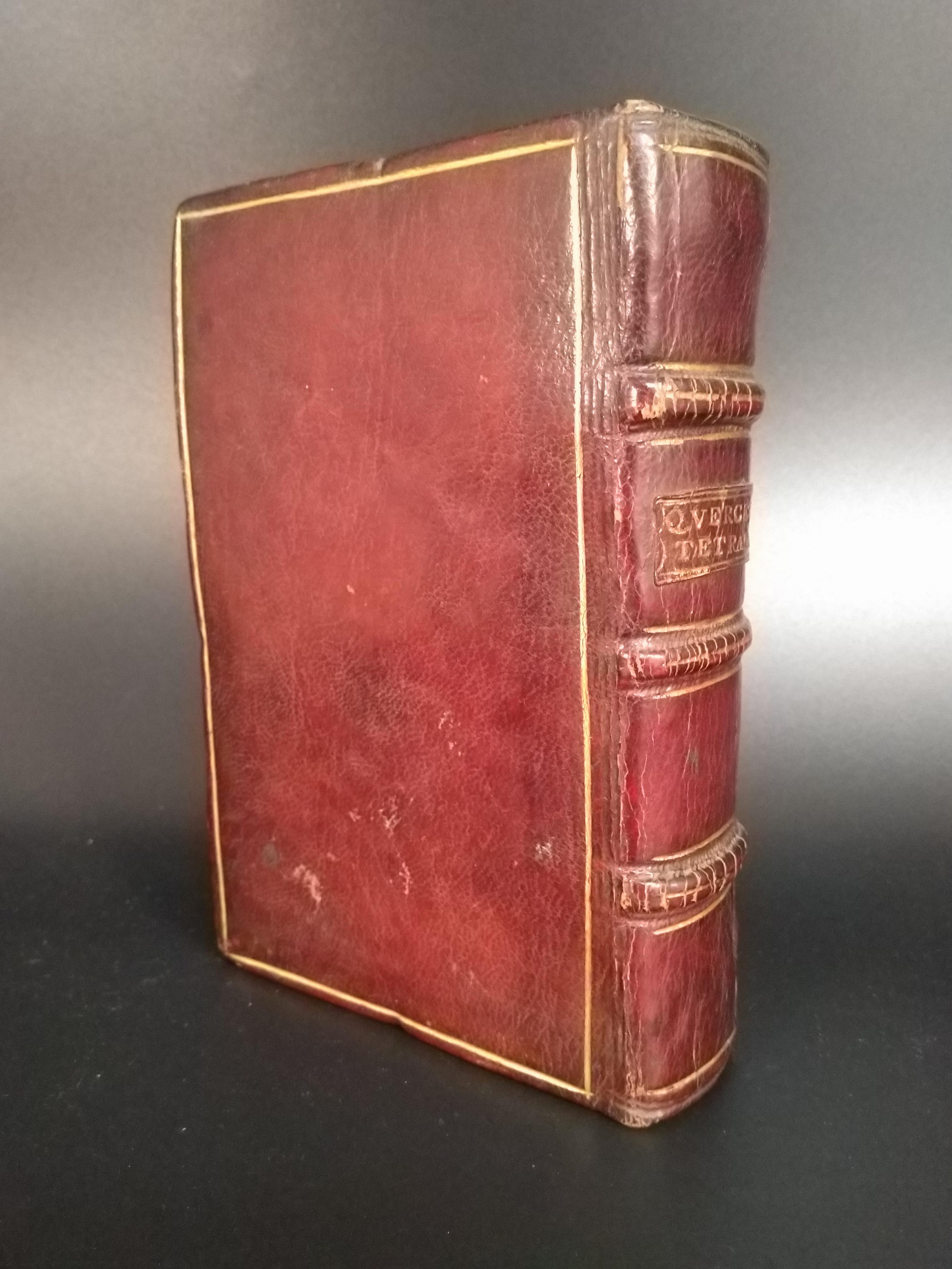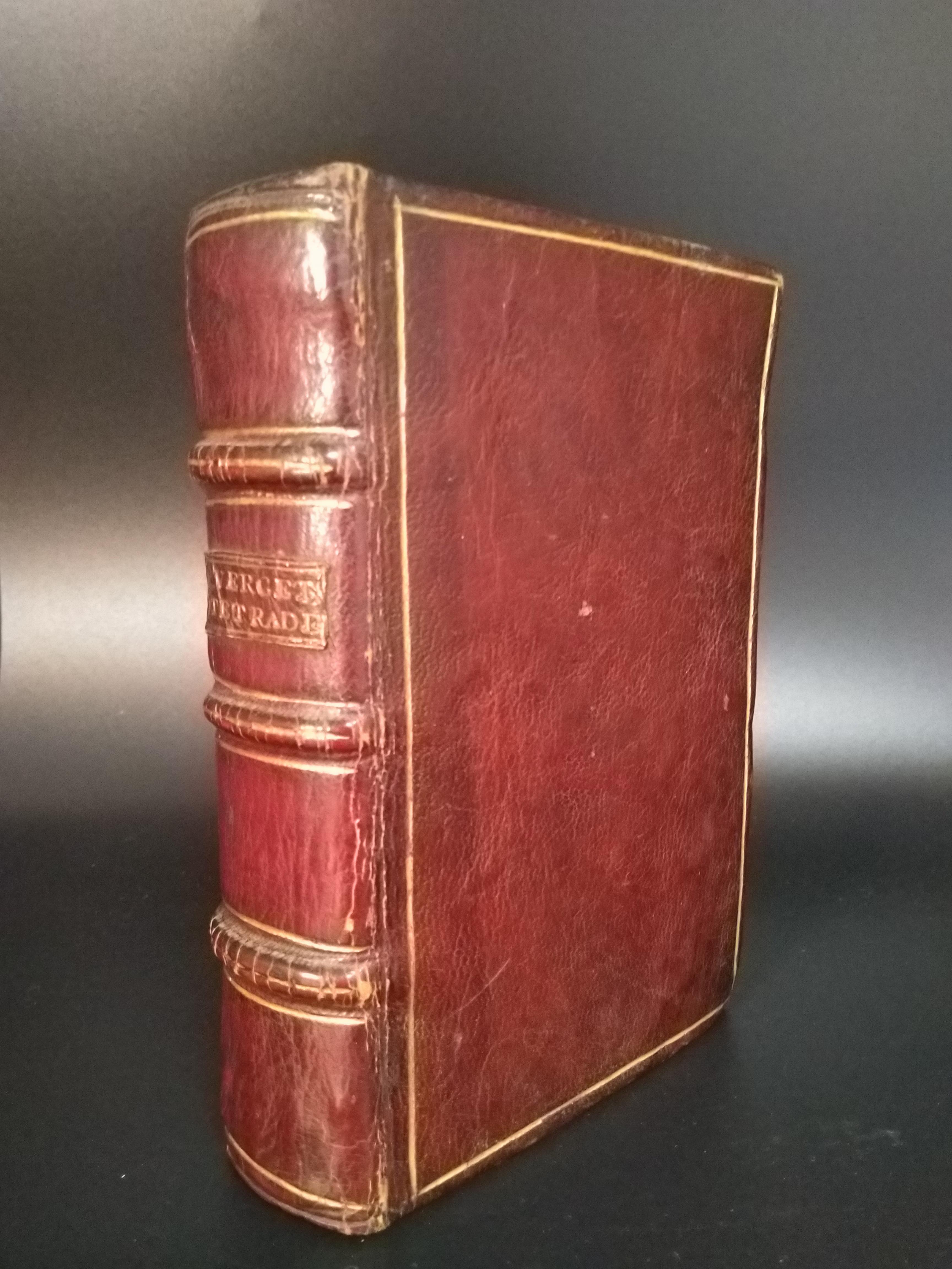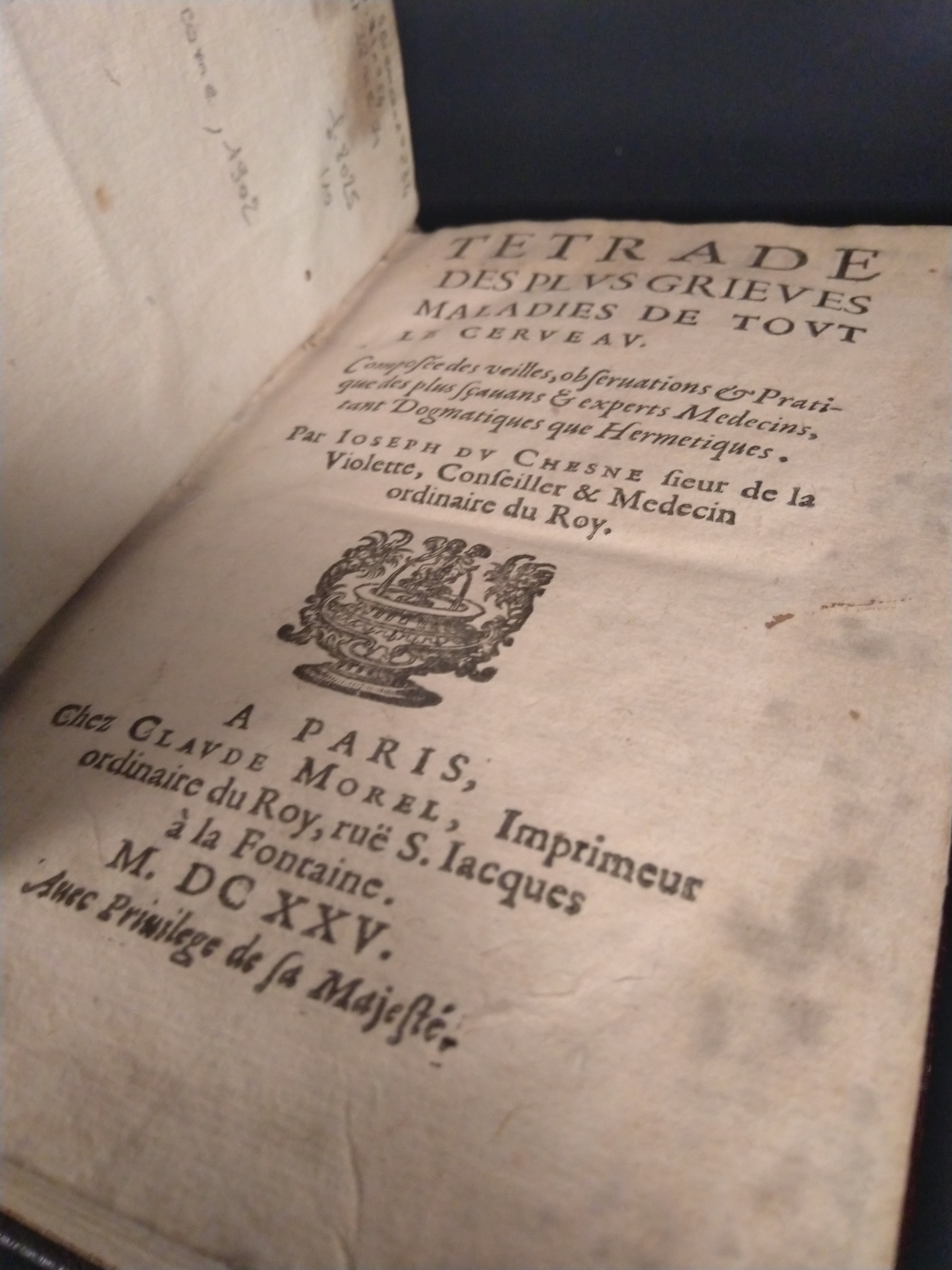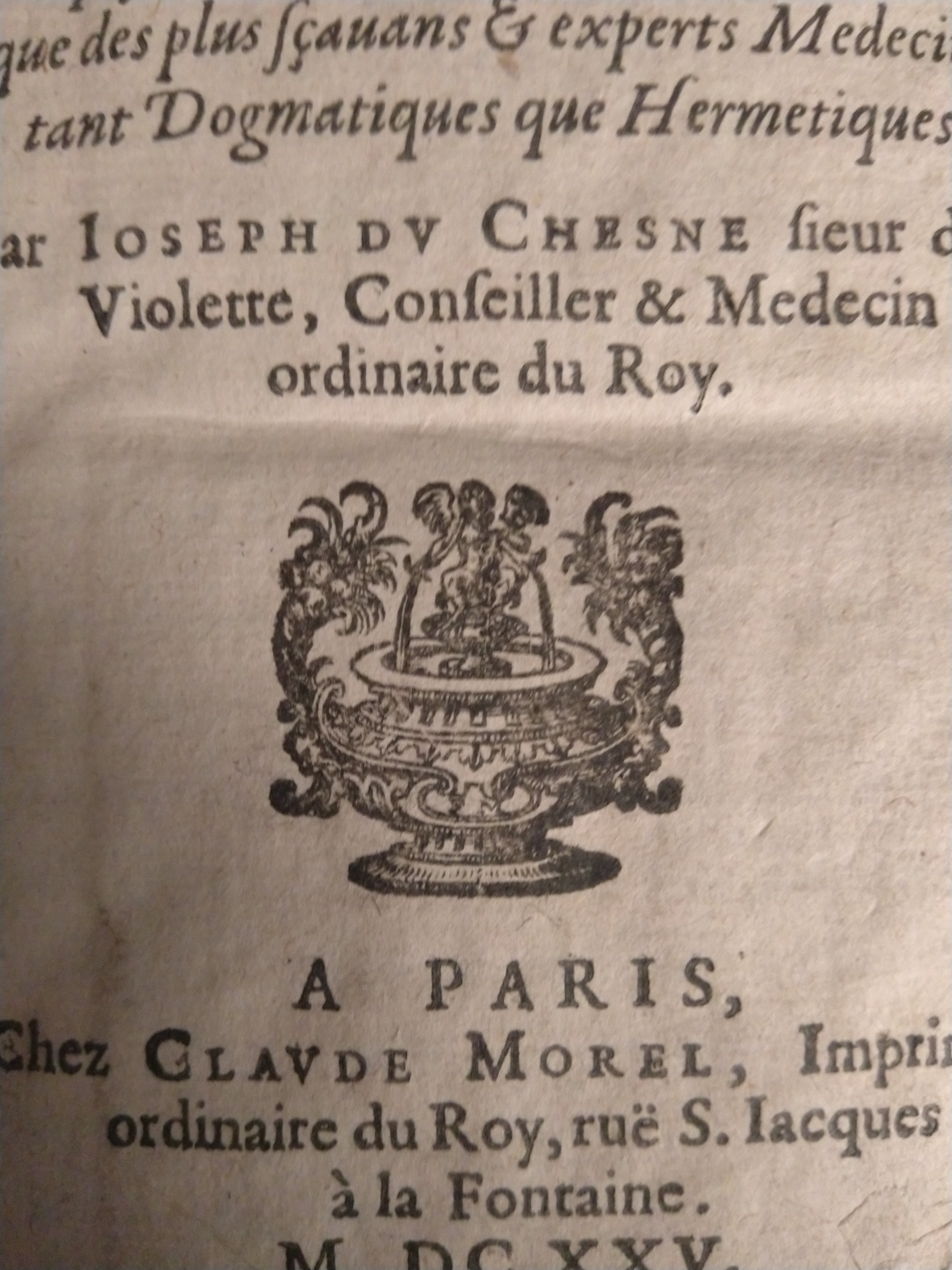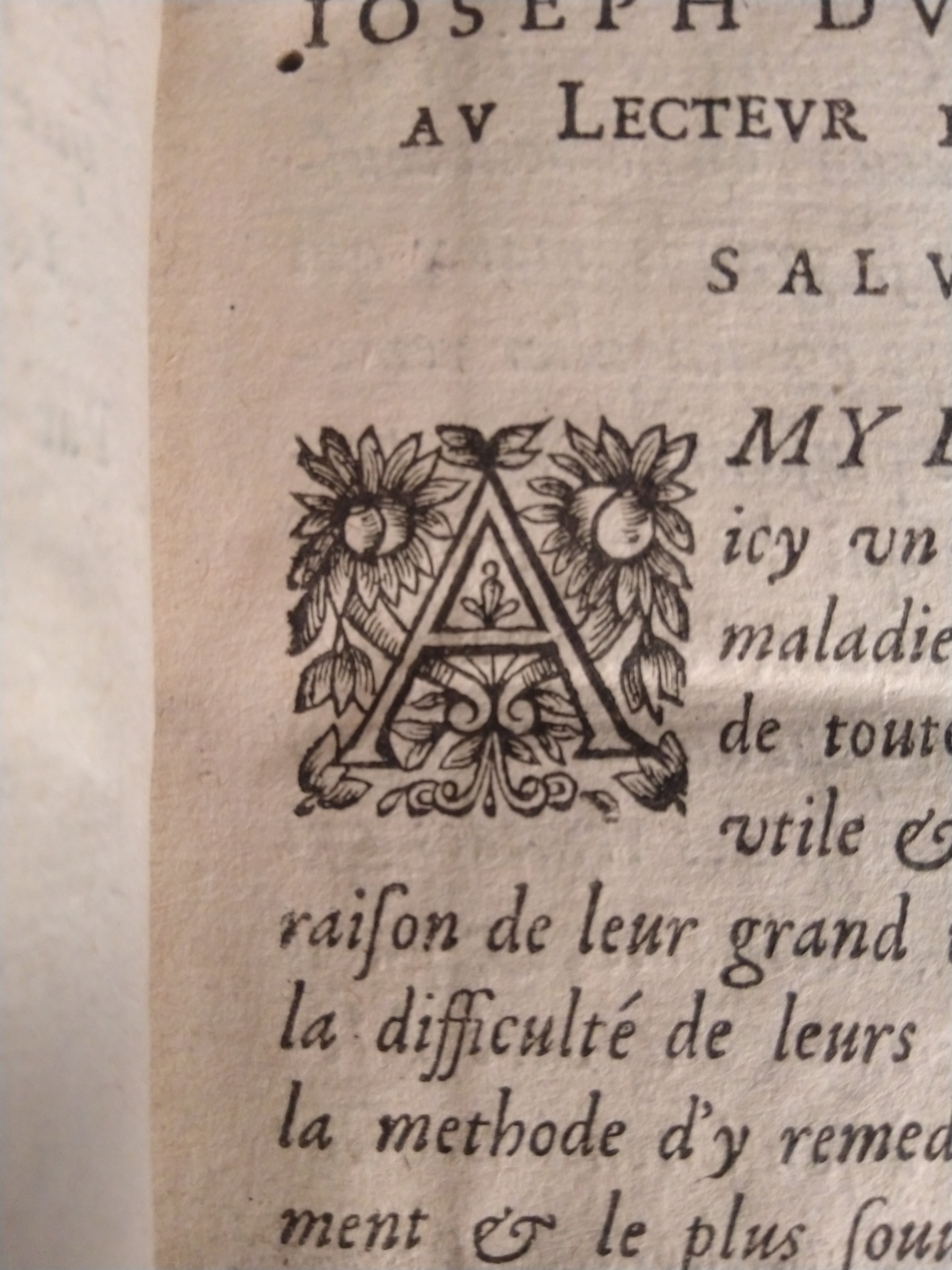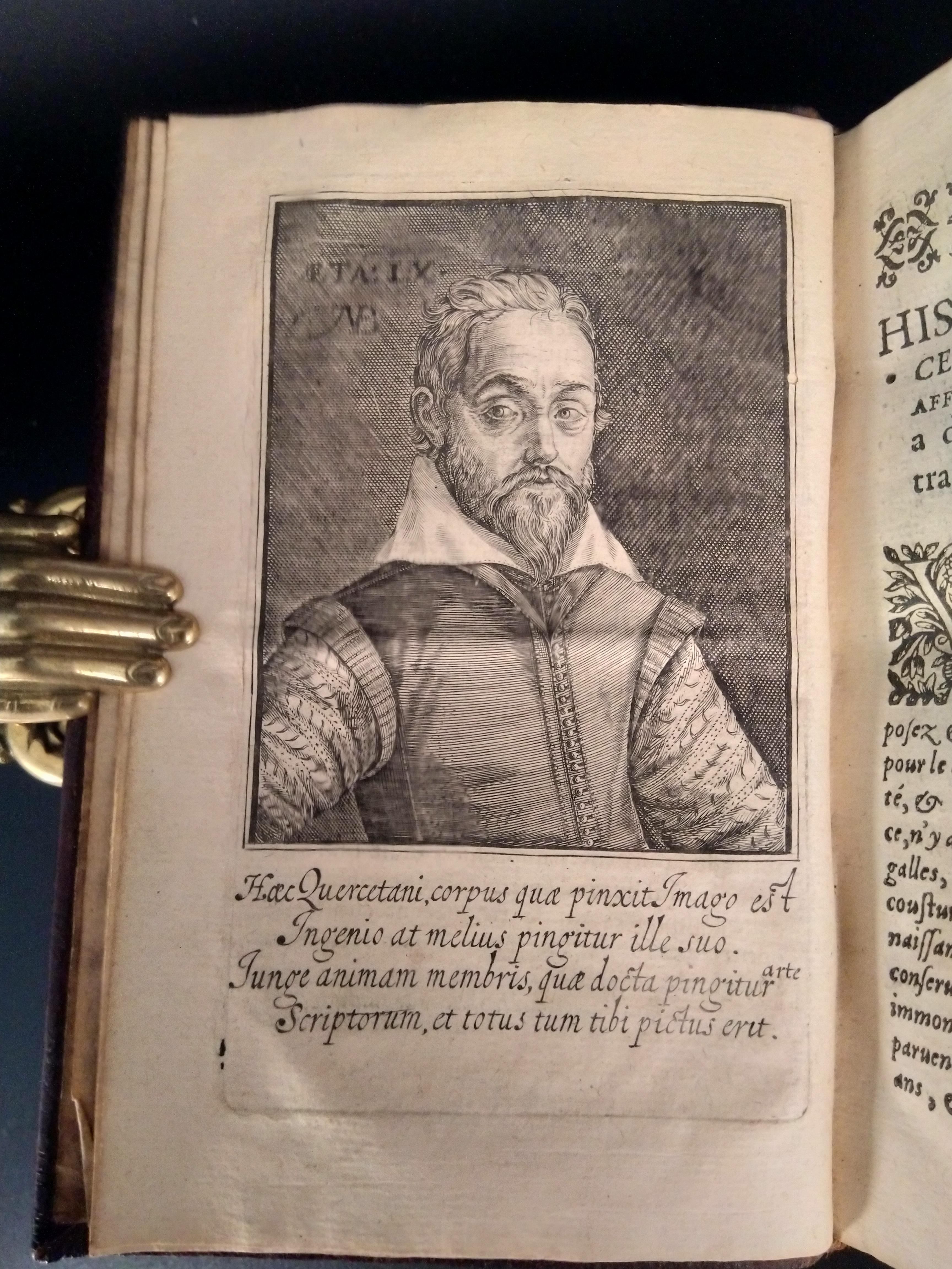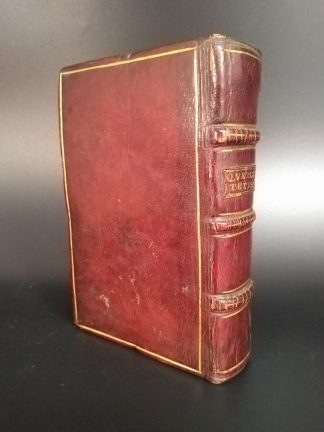DU CHESNE, Joseph
Tétrade des plus grièves maladies de tout le cerveau par Joseph Du Chesne, sieur de La Violette
Paris, C. Morel, 1625£1,950.00
FIRST EDITION thus. 8vo. pp. 12, 499 [xvii]. Roman letter, some Italic. Small woodcut printer’s device on title, small floriated woodcut initials, typographical headpieces, fine full page engraved portrait of author preceding text. Light age yellowing, light browning on a few leaves, small single worm hole to gutter, becoming a small trail in blank gutter of quires Cc-Dd, outer margin of title a little stained, rare marginal spot or stain. A very good copy in handsome contemporary thick, dark red morocco, covers bordered with a single gilt rule, spine with gilt ruled raised bands, gilt ruled in compartments, morocco label gilt lettered.
Rare first edition of the posthumous translation into French of Du Chesne’s ‘Tetras gravissimorum totius capitis affectuum’, first printed in 1606. A French physician and follower of Paracelsus, Du Chesne is mostly remembered for his important, if transitional, alchemical theories and for first introducing Paracelsus’s antimonial remedies to France. This extensive work consists of discussions of Epilepsy, Vertigo, Apoplexy and Paralysis. Duchesne was born around 1544 in Armagnac and studied at Montpellier, and then at Basle, where he received a medical diploma in 1573. During the 1570s at Lyon, he married Anne Trie the granddaughter of Guillaume Budé, and became a Calvinist. He went into medical practice and became physician to Francis, Duke of Anjou. He left Lyon in 1580 for Kassel in Hesse, and moved on to Geneva, where in 1584 he received citizenship. Duchesne was elected to the Council of Two Hundred in 1587, and undertook diplomatic missions to Bern, Basle, Schaffhausen and Zurich in the years 1589 to 1596. In 1598, following the Edict of Nantes, Duchesne returned to France and became physician-in-Ordinary attending Henry IV of France. In 1601 Nicolas Brûlart de Sillery gave him a mission as envoy to the Swiss cantons. In 1604 he went to the court of Maurice of Hesse-Cassel where he gave scientific demonstrations in a laboratory specially set up for him.
This rare book of neurology has an alchemical background, especially through the preparation and formulation of drugs, taken from the hermetic practice. The last part of the volume deals specifically with this subject: “La signature interne du Vitriol”, “Antimony”, “Gold and Silver”, “Bright Silver or Mercury”. Du Chesne treatment for epilepsy derives from the doctrine of the Galenic School but includes theories of the Spagyric School “où il est enseigné que la vraie anatomie des maladies se doit apprendre par la lumière de la nature du Grand Monde, dont l’homme est l’image”. For Du Chesne, as for Paracelsus, the life of man is inseparable from that of the universe, where reign the “principes hypostatiques exprimés par le triangle alchimique: soufre, mercure et sel”. His book ends with a curious chapter on “the vinification of gold” and how to make gold drinkable. He writes “le très chrestien roy de France [Henri IV] favorise la chimie: Sa Majesté a donné permission de bastir un laboratoire avec toutes sortes de fourneaux pour préparer des remèdes spagyriques”, and he gives a very complete and most interesting description of this chemical laboratory.
A most interesting and rare work; Ustc locates six copies only in libraries.
USTC 6020743. Heirs of Hippocrates No. 378.5. Krivatsy, 3472. Osler, 3749 (1617 ed.)In stock


